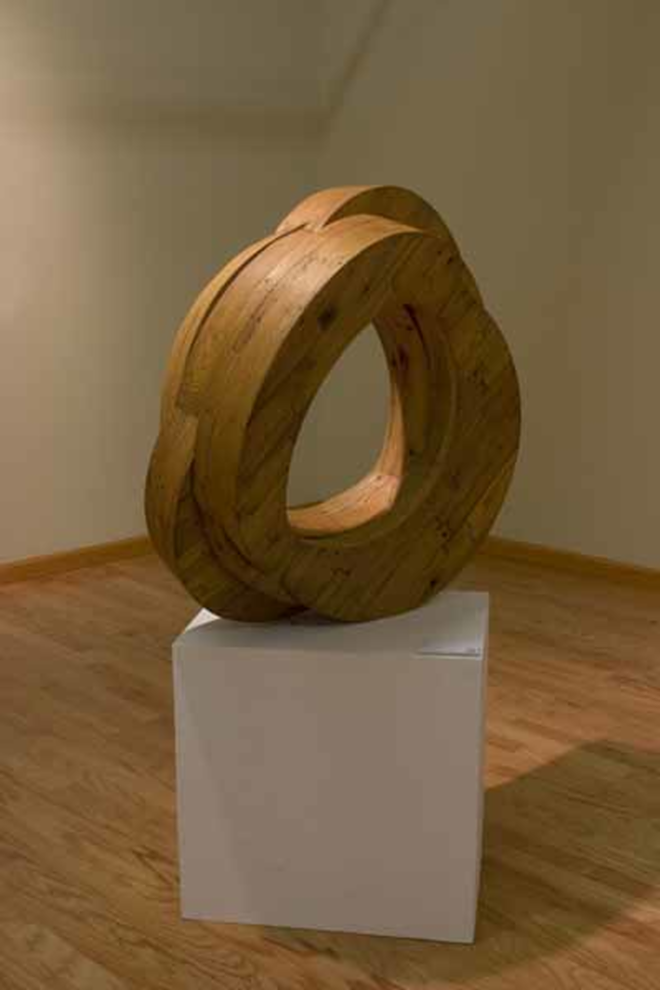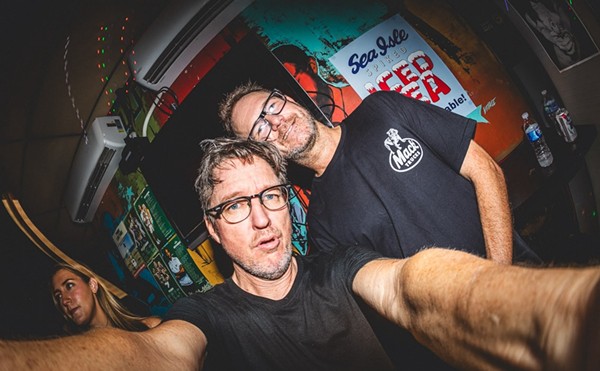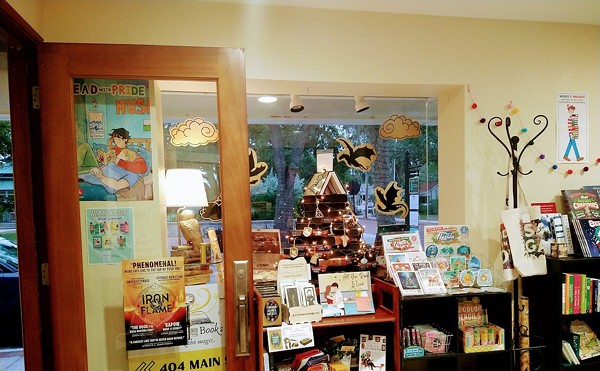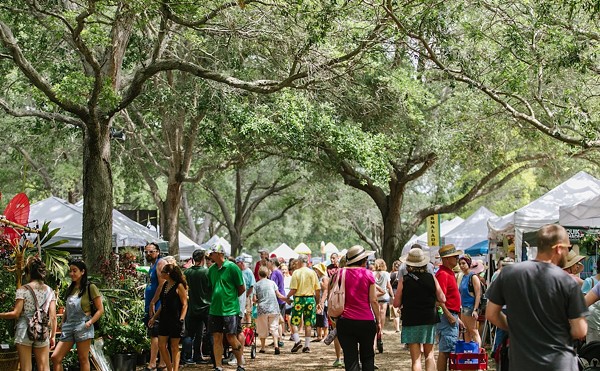Understated yet profound, sculptor Charles Parkhill's solo show is one of three current exhibitions eminently worth checking out at the Dunedin Fine Art Center (DFAC). A graduate of the University of South Florida and the University of Utah/Salt Lake City, Parkhill crafts large-scale, abstract wood sculptures that invite contemplation and interpretation. (Not least of the mysteries they invoke is how lowly plywood, in the sculptor's hands, can be crafted into a beautiful, Möbius strip-like shape.)
A former Tampa resident, Parkhill now lives in Sanford (between Orlando and Daytona Beach) with his wife, but he hasn't lost his fondness for Pinellas County — a place, he contends, where residents truly appreciate art. A past prizewinner at St. Petersburg's annual Mainsail Arts Festival, Parkhill describes the DFAC exhibition as a refreshing opportunity to temporarily abandon the confines of the outdoor art fair booth. At the invitation of DFAC curator Catherine Bergmann, he has installed 18 of his sculptures in a spacious gallery at the art center. Unsurprisingly, the results look great. Contemporary art devotees will notice an affinity between Parkhill's work and that of famed sculptor Martin Puryear. Like Puryear, Parkhill strikes a careful balance between representation and pure form, imbuing his sculptures with a tantalizing combination of the familiar and the unknown.
"In the years I have known Charlie and watched him create, he has never ceased to move and amaze me," Bergmann says. "His artistic vision is pure poetry, and people cannot help but respond."
Last week, I spoke with Parkhill via phone about his studio practices, influences on his art and the vicissitudes of working the outdoor fair circuit. Here's what he had to say:
Creative Loafing: What's a typical day in your studio like?
Charles Parkhill: I try to have at least three or four different pieces going at once. A lot of times you have to wait for glue to dry, or you're coating it with something — and, of course, sometimes you reach a dead end, so I like to have something else in progress that you can go to. [The pieces] sort of feed off of each other, too. I like to use wood that's reclaimed, and what I come across a lot of times dictates what I'm going to make.
What's the attraction of reclaimed or found wood?
The latest batch I've got is old southern yellow pine floor joists from an old house in Tampa that was built in 1918. Just the grain itself — you can't buy wood like that anymore. The grain, the color, the distress. I like the look of the nail holes, the rusted holes. Some times they'll even have paint on them that I try to salvage.
Do you see a finished sculpture as soon as you find a piece of wood?
Nothing ever comes from a preconceived idea. It's like Jasper Johns says: You go in your studio to get rid of ideas.
Some of my favorite pieces of yours have a kind of circular construction, or cylindrical construction; they look like knots or spirals. How do you build pieces like that? I'm thinking of "Enigma" or "Portal," which are both at the Dunedin Fine Art Center.
"Portal" was made with a special plywood. Normal plywood is manufactured in layers, and they change the direction of the grain with each layer and that's what makes it rigid. But they also make a plywood where the layers — the grain — all run the same direction. It's actually like handling a piece of rubber. On that particular piece I cut out a 7-inch strip and just wound it into a form and filled in the voids with solid wood. "Enigma," that came out of all those plywood rings I found.
[Curator Catherine Bergmann] mentioned to me that she showed you the gallery and sort of said, do what you will. Is that how it happened? You came back and said, "Well, here's what I'd like to install."
She called me about a year ago and asked me if I was interested in that gallery. It sounded great because normally I would be generating work for something like Mainsail to fill a 10-ft.-by-10-ft. cube — not too big because it won't sell, but have one big [piece] for the judge. It's like the venue dictates what you produce. This was an opportunity to create some really big works that probably won't sell, but so what. It felt really good. I had a huge spurt of energy. That's when I found the plywood discs — and I found a huge pile of cypress scrap in Tampa, and that's what I made the "Cuff" piece out of.
Who are the artists you admire and look up to?
Well, the obvious contemporary sculptor would be Martin Puryear. He was in the Miami Art Museum about seven, eight years ago, maybe longer. Man, was that something. Of course, there was nobody in the museum; I think it was a Saturday afternoon. My wife and I went in and had the whole upstairs gallery [to ourselves] — and I'm just blown away.
I'm crawling on the floor and looking underneath [Puryear's sculptures], and the guards are freaking out. Once they figured out that I was taken with the work, they started explaining — because they had installed it — how one of [the pieces] came apart.
I'm always interested particularly in how sculptors treat the surface. [Isamu] Noguchi had these stone pieces where you could tell he used some kind of sharp, pointed chisel to chip away, and then he polished the piece — but not too much, just enough — so that it kept all the gouge marks. That's what Puryear does. You can see all the process of what he's done, but it still looks finished.
What's the most frequent question you get about your work from people?
"What's it supposed to be?"















